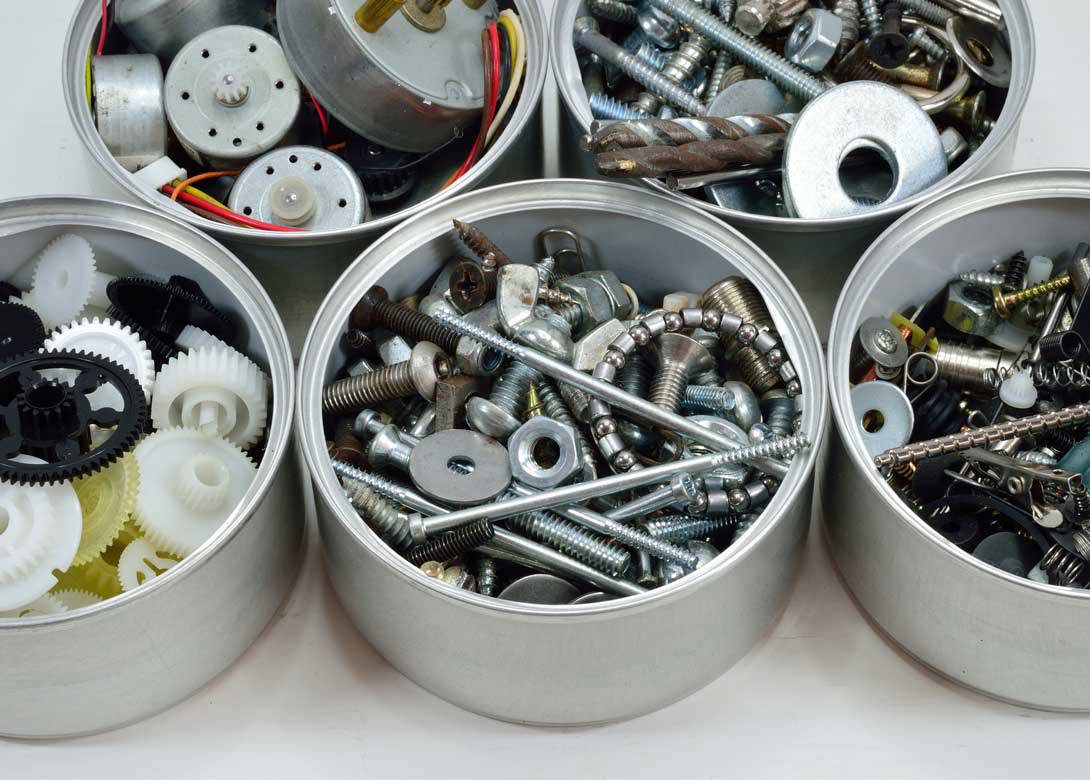

When choosing the appropriate material, users should always consider the area of application. Here, Marcus Schneck, CEO of norelem explains why it is crucial to use operating parts made of high-quality materials as this can ensure the reliability and stability of the components used and products produced.
When looking around the factory floor, as sure as day, a gleaming array of metallic instrumentation and machinery will be looking back at you. That being said, innovations in both plastic materials and process capabilities, coupled with changes in industry demands have closed many of the physical and cost performance gaps that once existed between metal and plastic.
The materials chosen are naturally an important factor to consider when using standard and operating components. The right choice of materials guarantees high-quality, durable products whilst finishes and surface treatments ensure components such as grips and knobs are also visually appealing.
Composite materials, such as Glass fibre reinforced PPA (Polyphthalamide) can also be beneficial to use in the manufacturing and engineering sectors due to its lightweight properties, relative stiffness, strength and durability. These materials are growing in popularity too, with the global composites materials market growing at about 5% per year, with carbon fibre demand growing at 12% per year.
The correct material for every application
Of course, a range of factors should be considered when choosing components and the materials they are made from. Important selection criteria can be anything from tensile strength, corrosion resistance, operating temperature to chemical resistance. Considering these elements as well as the environment the material will be used in will aid you in choosing a material fit for the chosen application.
The most commonly used materials used within the engineering and manufacturing industry are plastics, steel, aluminium, cast iron, non-ferrous metals and stainless steels. The use of plastic within the engineering industry has seen that plastic-to-metal conversion can result in savings of 25-50% due to the elimination of fastener and assembly needs. Plastic can be used for multiple applications such as hydraulic presses, granulators or plastic extrusion lines to name a few.
Meanwhile, inserts such as bushes or threaded pins can be made of steel, stainless steel or brass that offer high impact properties, making it a desirable material to use within machinery. A combination of plastic and metal materials can be very beneficial when used in unison, utilising the best of both material properties.
When working with pull handles, tubular handles, recessed handles as well as clamping and tension levers the proportion of metal components is slightly higher. Knurled knobs, palm grips and star grips are made mostly of plastic due to the materials user-friendly properties.
Electrical discharge, friction and high temperatures are three challenges within engineering and manufacturing industries that require specific materials to be used in order for machinery and components to operate efficiently and safely.
Special applications require specific materials - a good example of this is antistatic operating parts. These parts are made of an electrically conductive plastic and thus prevent electrostatic discharges, which can impair sensitive electronic components.
Using components made of antistatic thermoplastic which comply with DIN EN 61340-5-1 and can be used in ESD (Electrostatic Discharge) protection zones. These ESD products are also used for devices, components and protection systems in areas with high risk of explosion.
Materials and insulators if chosen correctly can eliminate electrical discharges altogether, providing a safe and secure working environment, whilst reducing the chances of machinery needing maintenance further down the line.
Electrostatic discharges occur quite frequently during production, assembly or transport, antistatic operating elements provide a remedy here. Ensuring components are regularly tested for its correct electrical conductivity, in accordance with strict standards whilst carrying the yellow ESD logo for clear identification is vital for the machinery and workers safety.
Glass fibre reinforced PPA (Polyphthalamide) - a composite material which, in contrast to conventional plastics, is particularly dimensionally stable - is a common choice of material in a high heat zone. Components made from this material can withstand a temperature of 150°C and short term even temperatures up to 250°C.
These products find use in a number of industries such as medical technology, where the components have to withstand steam sterilisation. They are also a good choice for all areas of equipment construction where high ambient temperatures prevail.
Components made of glass bead-reinforced thermoplastic, mainly used for the inside of operational handles, ensure very good wear and gripping comfort - even in wet areas. Choosing the right material is also crucial for your workers safety, ensuring the materials used aren’t going to retain the heat and scald/injure a worker when operating the machinery.
With a wide range of materials to choose from in the industry, it’s important to choose the right material for the right application in order to keep machinery and components working smoothly.
When working in a high friction area polyacetal guarantees high hardness and a low coefficient of friction, however, polyketone offers a much longer service life and optimum power transmission. Due to the exceptionally high abrasion resistance and very good tribological properties of polyketone, the susceptibility to tooth fracture is also significantly reduced.
The use of bearing surfaces such as lead, or copper will also reduce the risk of friction amongst components and machinery parts. Sufficiently lubricating areas which may incur friction will also lessen the chances of friction and wear.
With the industry bridging the gap between metal and plastic materials, engineers and manufacturers are having to make the decision on what material is best for certain applications.
Converting to plastic parts can give manufactures more freedom and flexibility, including a greater selection in materials. Of course, metal materials have a trusted reputation for being robust and durable, but plastic certainly can be as good as its metal counterparts, is quickly becoming the go to material for its flexibility and lightweight properties.

Having spent a decade in the fastener industry experiencing every facet – from steel mills, fastener manufacturers, wholesalers, distributors, as well as machinery builders and plating + coating companies, Claire has developed an in-depth knowledge of all things fasteners.
Alongside visiting numerous companies, exhibitions and conferences around the world, Claire has also interviewed high profile figures – focusing on key topics impacting the sector and making sure readers stay up to date with the latest developments within the industry.





